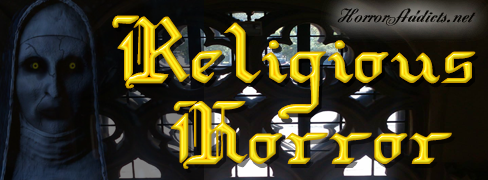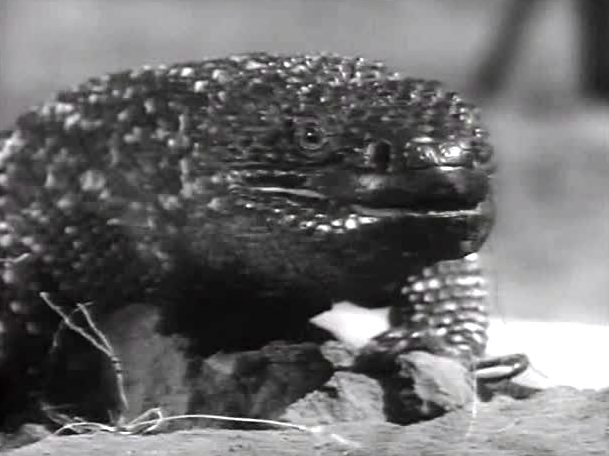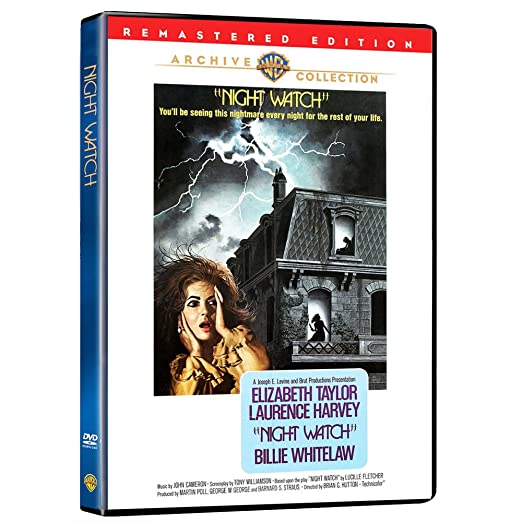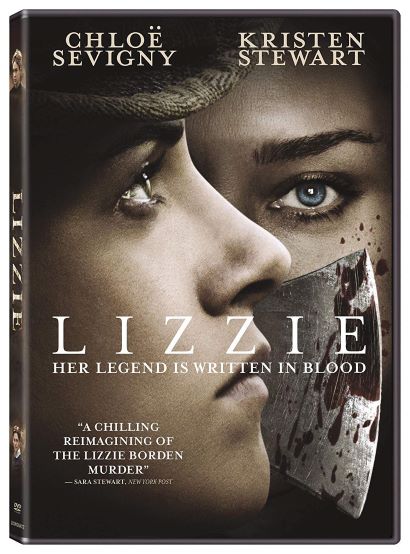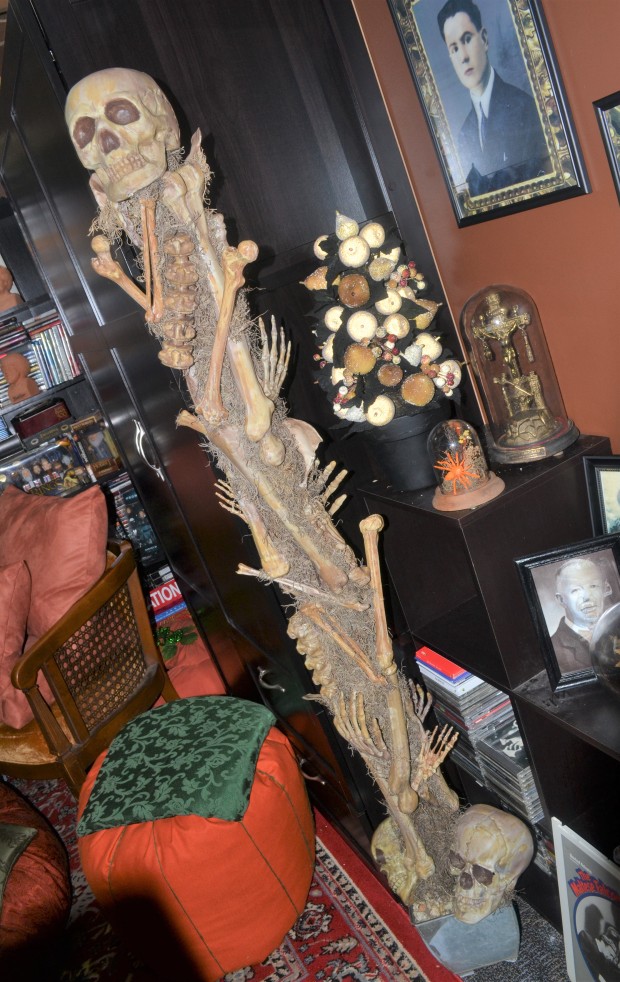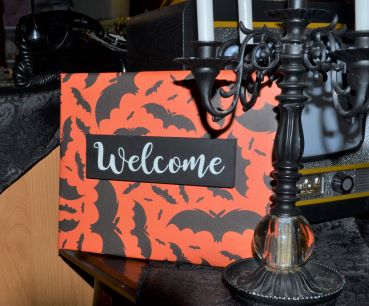Re-blogged from 10/14/2014
Apparitions is a Fine Spiritual Thriller
By Kristin Battestella
What if Mother Teresa was possessed and died during an exorcism? So begins Apparitions, a 2008 6-part British tale chronicling a modern day exorcist caught between the bureaucracy of Rome and the demons running amok in London. Who knew?
Father Jacob (Martin Shaw) tries to help a young family in fear of demonic possession, despite Cardinal Bukovak’s (John Shrapnel) insistence that Father Jacob is over stepping the bounds of his archaic exorcism office. Sister Ruth (Siobhan Finneran) is placed as Father Jacob’s secretary to keep an eye on him, but she begins to question the strange goings on around their parish – and their mysterious patient Michael (Rick Warden), himself a victim of possession in Satan’s master plan to birth new and powerful evil on earth. Can Father Jacob unravel these demonic intentions and save the lives and souls of those around him, or will his own institution and the non-believers inside and out inadvertently allow evil to triumph?
Blasphemous suggestions, debates on canonization, and behind the scenes church happenings are immediately intriguing to start Episode 1 of Apparitions. However, series writer and director Joe Ahearne (Ultraviolet, Doctor Who) and co-creator Nick Collins (Murder in Suburbia) also smartly endear the cast and plots with quickly relatable young girls with possessed dads and seemingly inspired Leprosy healings. There’s a pleasing attention to detail as well through battle of wits dialogue, historical dates, and specific examinations. Are the saints as active in earthly work as demons – even in prisons and with rapists seeking repentance? Perfumes versus foul scents, appearing and disappearing eerie figures, and more devilish implications create a paranormal but religious CSI design with no need to resort to nasty priesthood innuendo. The flaws of the church, however, are certainly acknowledged; exorcisms are recognized as medieval hokey, and the misbelieving even make some Hammer Horror jokes. Are such non-believers all possessed by evil? Of course not, but are all men of the cloth touched by grace? Nope. Apparitions confronts the whole lot of grey in between thanks to multiple storylines and layers of legion; the longer serial format gives room for deeper demonology dimensions, legal issues, social services, church hierarchy, government battles, and family debates by Episode 2. A film would have one monstrosity excised with the confrontation against evil resolved in several hours, but Apparitions offers a possession infrastructure to mirror the church’s chain of command. Who knew being a priest was such dangerous work? Apparitions remains self aware with quips – “Don’t make many enemies in your line of work?” “Only Satan.” – and provides fantastical but honest discussion on humanity being the battleground between good and evil where our flaws, temptations, and those to which we would or would not do harm are used against us. Casualties and sacrifices happen in this spiritual warfare, and Episode 3 raises the stakes as Apparitions uses its individual hours or multi part arcs to tie its larger plot together. It was probably tough to watch Apparitions from week to week thanks to the somewhat rolling cast and changing righteous or evil affiliations, but binging several episodes at a time keeps the soulful character dilemmas in focus.
Demonic pregnancies and abortions gone awry push the exorcism twists further in Episode 4, but these upsetting, controversial themes remain delicate and compelling. Where is the line between deformity or evil showing upon one’s person, disability, mental illness, and possession? Do we encounter demons daily but remain unaware as we argue the fine line between medical rights, patient privacy, and religious need? No one wants a priest interfering with healthcare, but interesting commentary on how medicine was once thought of as superstition helps plead the spiritual case. Demons, of course, thrive on perversion and seek to be born in emulation of John the Baptist and Jesus Christ. Even people who think they believe are shocked when they encounter the possessed on Apparitions. Episode 5 mixes Islam and supposed visions of the Blessed Mother with hopeful, miraculous moments, and this good standing tall balance keeps Apparitions from being too somber or serious. Can we recognize these good or ills among us? Do we invite the devil in while supposedly differing religions recognize our common evil enemy? Apparitions poses a lot of questions and can be lofty at times in hypothesizing whether humanity is inherently bad or good, and some secondary people or plots end up forgotten and unresolved by the Episode 6 finale. Several excellent supporting players don’t have any follow up time, and this one series could have perhaps been 8 or 10 hours instead of 6. Fortunately, great guest stars and core characters facing their own demons provide more thought provoking muster. Could you work for evil just once to save millions? The needs of the masses certainly outweigh the cost of one’s own life – or soul. The finale pieces together all the significant dates, anniversaries, and births to up Apparitions’ ante, testing its faithless by having them perform exorcisms and face their own catastrophes. Once you open the door to hell, can it be closed? Does God let evil in only to prove good’s triumph? For all its doom and gloom on evil and possession, Apparitions is a powerful spiritual show about the underlining good needed for the job, cloth or no cloth.
Apparitions producer and star Martin Shaw (Judge John Deed, Inspector George Gently, The Professionals) looks the mature, priestly part as Father Jacob and is certainly up to the credible, experienced, and soft spoken but kick ass task. His rapport with young Romy Irving (Public Enemies) overcomes her fear and ours as Father Jacob puts pressure on and pursues his investigation for the true cause – there’s no time to pussyfoot around when souls are at stake! Father Jacob firmly believes Satan is amidst our daily lives but must continually defend his exorcism office even to fellow church members who think he is relic of the past. Father Jacob embodies an interesting debate – he doesn’t want people to suffer to prove his point, but the possessed are the exact people he must excise. How much pain is saving the world going to take? You don’t need to believe to enjoy Apparitions thanks to Shaw’s everyman alone style and the doubts cast upon him by others. Why do so many immediately resist the opportunity for his help or take extremes to spit in his face? Is it easier for people to run from faith when they should fight evil or help good to happen? Father Jacob is an anchor for his office, yet Shaw also provides excellent internal conflict and silent reflection. His line of work always leads to death, but Father Jacob must continue to fight the good fight. A very strong script also helps Shaw take it to the next level – he always has a good comeback or the right thing to say to the possessed, the believer, or the church that is both for and against him. Father Jacob has to break the rules and does what he has to do, and Apparitions is a worthy ride because we want to see Father Jacob succeed against all this dang earthly red tape just as much as we root for his quest against supernatural evil.
Are these miracles on Apparitions done for good or ill? Guest priest Elyes Gabel (Game of Thrones) adds more conflict and temptation while addressing homosexual ideologies within the Catholic Church. Are the ones concerned with what is thought to be the unclean or questioning their faith and role in the church the ones closest to God that the demons seek to trick and enter in? David Gyasi (Interstellar) as prison chaplain Father Daniel wants to take action and is a resourceful ally for Father Jacob, but doubts what he witnesses during exorcisms. Wouldn’t you? Shaun Dooley (Red Riding) also represents a realistic father trying to handle divorce and parenting before possession becomes a factor. Why does he have to justify his family to the church, indeed? Rounding out the ensemble is Rick Warden (Band of Brothers) as the perfectly disturbing, demonic, and desperate Michael. His Holocaust parallels and waxing on why God allows evil to happen are sickly good television. The devil is, after all, a master wordsmith and persuasive little fellow who exploits our fears and weaknesses. Michael’s struggles with his possession are eerily correct in many aspects – cast out one demon on Apparitions, and another takes his place. Ultimately, Satan wants your soul, or better yet, the best soul he can find. The higher evil can climb, all the better. Thus is the battle on Apparitions.
Some of the female characters on Apparitions, however, are somewhat under written as either helpful, bitchy, or obstacles as needed and could have stayed around much, much longer. Sassy nun Michelle Joseph (Eastenders) feels under utilized as the good counterbalance to numerous cliché non-believing beotches, but detective Stephanie Street (20 Things to Do before You’re 30) does better as a strong sensible lady seeking answers to these crimes. Can justice be served legally and spiritually or does one office trump the other? Likewise, abortion clinic doctor Claudia Harrison (Murphy’s Law) is willing to consider Father Jacob’s theories whilst also seeing to her patients needs, and psychologist Claire Price (Rebus) seems objective but her atheist stance and evaluations for the church clash just a bit. Cherie Lunghi (Excalibur) also provides a very interesting debate on the devil as seduction, and it is such a loss that Apparitions didn’t continue for a second season. Just seeing Lunghi and Shaw go toe to toe in this ongoing good versus evil war would have been delightful enough! Thankfully, Siobhan Finneran (Downton Abbey) is a strict but fun Sister Ruth with worthy wit to match Shaw as Father Jacob. She starts out an unofficial spy for the suspicious, jerky but juicy, and career advancement seeking John Shrapnel (Gladiator) as Cardinal Bukovak, but Sister Ruth is wise enough to make up her own mind in whether she is for or against what’s happening. She certainly plays with that vow of obedience as needed! Again, this evil fighting priest and nun tag team antagonism would have been fun to see in a Series Two. Pity.
The look and feel of Apparitions is appropriately foreign and ecclesiastical, too, with plenty of priestly robes, aged buildings, and inspiring or brooding locales from London to Rome. Smart uses of Latin prayers and Italian dialogue also accent the drama, which doesn’t go for shocking full on horror in its solid 55-minute shows. Of course, there are disconcerting touches of gore, blood, and skin – and not as in nudity skin, either – and subtitles will be necessary for these soft-spoken accents and multiple languages during the tense moments of exorcism, violence, and surprises. Despite old world candles, chapels, and rituals, the medieval rite in the modern realm also makes amusing appearances. Oh, a second priest isn’t handy for an exorcism? Let’s just call him up and put on the speakerphone! Excellent intercutting, uses of light and dark photography, colored lighting, and zooms up the intensity, and music, prayers, and near chanting rhythms heighten simultaneous action. People do shout or talk over each other, but this works when the languages or prayers are being translated – or when taunting demons are causing mayhem while those unseeing speak on, unaware. Fiery fantastics and walking on water spectacles do have their moments in the final two episodes, but most of Apparitions relies on the cast in action or reaction before special effects. Sometimes the imagery of the possessed tapping on the church gates waiting to enter in is really all you need to send your demonic tale home.
Some audiences may be put off by the totally steeped in religion setting of Apparitions, and the variously heavy subject matter is obviously polarizing. This is however an intelligent presentation of a frightening implication, a word of warning on the dilemmas both internal and external akin to the classic “The Howling Man” episode of The Twilight Zone. Despite sensational topics and a dabble in the supernatural realm, Apparitions does not go for the scandalous or shocking but remains a mature analysis on body, mind, and soul – you won’t find everything wrapped in a pretty bow here like other exorcism films that declare all is well. The plots remain personal with small people amid the institutional framework solving mysteries and using clues in this tormenting game against evil – a game evil wants to play with you. Mainstream sophisticated viewers, casual horror fans, and even the non uber religious can enjoy the good versus evil drama of Apparitions.



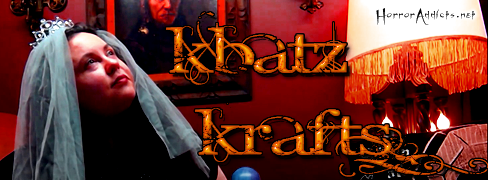


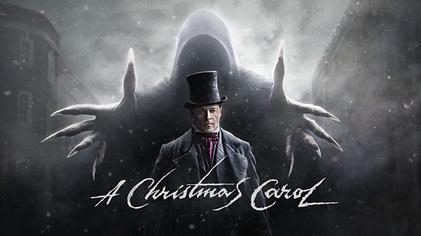 The refreshing script simplifies the Dickensian wordiness yet we do get some of the sardonic undigested beef quips amid self-aware glances at the camera and eternity spent in a forest of abandoned Christmas trees and forgotten childhood memories. An act of kindness said to be given to someone in pain is rejected as the abused perpetuate abuse, dealing in greed and people as commodities. Those scarred mentally and physically by the cruel, cost-cutting overseers rightfully call upon revenge like a reverse It’s A Wonderful Life orchestrating this spiritual comeuppance. Snowfall and ash in the air mix as other realms and childhood fears merge with violent canes, creepy singsongs, and pets caught in the chilling crossfire in a house that can’t afford another mouth to feed. Hiding behind the bed curtains is used to frightful effect as A Christmas Carol shows what the book implies yet leaves nasty suggestions to the shadows. Hope, however, can be found small as a mouse, big as a camel, or even in fanciful book illustrations come to life to save a boy’s mind from his torturous reality. Unfortunately, people are only worried about themselves. Gifts are just unwritten debts and unprofitable affections. These spirits force us to relive the darkest moments of the picture we paint so we may unlearn the ills that have shaped who we are. Here A Christmas Carol feels timely and modern, layering the past with disturbing familiar faces and real-world terrors that harden a boy’s heart and break our Christmas spirit. Magical deflections, pleas to go home, and facing the horrors combine for superb duality and visualizations as children may or may not see spirits and two of the same character appear in the same place at once. Loom factories become massive calculators in an industrial fantasy hitting home the cold hard numbers. Tragedy for many is opportunity for the few, and that’s just good business to see pounds instead of people and exploit their weaknesses accordingly. Shameful humiliations done on Christmas Day are born not out of desire, but agonizing experiments testing the solemn limits of what good people will do for money. Viewers contemplate how far A Christmas Carol will go in examining the the value of human virtue, and Merry Christmas greetings are said for all the wrong reasons – justifying the prayers, warnings, and curses that one day the truth will look us in the mirror. Mining survivors unite in memorial choirs, and the poor make up the difference with happiness and love instead of itemizing priceless intangibles. Halos at the altar suggest salvation, but admitting regret or that love came too late to stop hatred isn’t enough against chilling figures in the dark, haunting drownings, cracking ice, and death shrouds. Tolling bells and heartbeats announce the fatal consequences as we accept our deserved fate. For all the spirited meddling, it is up to us to change and act for the benefit of others without expectation of reward as A Christmas Carol concludes in full Dickensian compassion.
The refreshing script simplifies the Dickensian wordiness yet we do get some of the sardonic undigested beef quips amid self-aware glances at the camera and eternity spent in a forest of abandoned Christmas trees and forgotten childhood memories. An act of kindness said to be given to someone in pain is rejected as the abused perpetuate abuse, dealing in greed and people as commodities. Those scarred mentally and physically by the cruel, cost-cutting overseers rightfully call upon revenge like a reverse It’s A Wonderful Life orchestrating this spiritual comeuppance. Snowfall and ash in the air mix as other realms and childhood fears merge with violent canes, creepy singsongs, and pets caught in the chilling crossfire in a house that can’t afford another mouth to feed. Hiding behind the bed curtains is used to frightful effect as A Christmas Carol shows what the book implies yet leaves nasty suggestions to the shadows. Hope, however, can be found small as a mouse, big as a camel, or even in fanciful book illustrations come to life to save a boy’s mind from his torturous reality. Unfortunately, people are only worried about themselves. Gifts are just unwritten debts and unprofitable affections. These spirits force us to relive the darkest moments of the picture we paint so we may unlearn the ills that have shaped who we are. Here A Christmas Carol feels timely and modern, layering the past with disturbing familiar faces and real-world terrors that harden a boy’s heart and break our Christmas spirit. Magical deflections, pleas to go home, and facing the horrors combine for superb duality and visualizations as children may or may not see spirits and two of the same character appear in the same place at once. Loom factories become massive calculators in an industrial fantasy hitting home the cold hard numbers. Tragedy for many is opportunity for the few, and that’s just good business to see pounds instead of people and exploit their weaknesses accordingly. Shameful humiliations done on Christmas Day are born not out of desire, but agonizing experiments testing the solemn limits of what good people will do for money. Viewers contemplate how far A Christmas Carol will go in examining the the value of human virtue, and Merry Christmas greetings are said for all the wrong reasons – justifying the prayers, warnings, and curses that one day the truth will look us in the mirror. Mining survivors unite in memorial choirs, and the poor make up the difference with happiness and love instead of itemizing priceless intangibles. Halos at the altar suggest salvation, but admitting regret or that love came too late to stop hatred isn’t enough against chilling figures in the dark, haunting drownings, cracking ice, and death shrouds. Tolling bells and heartbeats announce the fatal consequences as we accept our deserved fate. For all the spirited meddling, it is up to us to change and act for the benefit of others without expectation of reward as A Christmas Carol concludes in full Dickensian compassion.




 Diablero – This 2018-20 Mexican Netflix series based on the book by the late Francisco Haghenbeck is oddly structured with fourteen episodes ranging between a few forty-minute episodes and mostly shorter half hour entries. Despite steady directors and a regular writer’s room, the pace is uneven, treading tires over demonic puzzle pieces while prologues each episode give the viewer the same information twice. Voices are soft compared to loud violence, and the subtitles don’t exactly match the spoken languages. Silly tentacles, levitations, and in-your-face demon roars are unnecessary, and the hot priest in a towel is weird, too. Fortunately, shadowed stabbings, hooded attackers, and demonic abductions are frightening. Edgy music and Mexico City panache accent the last rites, chaos, and evil spirits trapped in bottles. There’s a lot to establish with ecclesiastics, creepy ephemera, steampunk gadgets, and mystical mixed cultures. However great characterizations anchor the quicksilver weapons and uneasy alliances. Career-oriented cardinals and ineffective police can’t help with these demonic problems, but others struggle to accept why God allows these things to happen, if he ever even existed, or if humanity has been abandoned. Missing bodies, occult symbols, burned flesh, deceptive encounters, eerie eyes, and demonic dissected lab rats deepen the scary while seedy criminal shenanigans provide sassy humor. Despite knife standoffs, morgue switch-a-roos, and intriguing connections between pregnant women, simpletons, abused nuns, and significant birth dates; it takes half the First Season to get anywhere with the secret organizations, intertwined family histories, and spells. Our Priest is correct in saying events happen for nothing and they should investigate properly. Seeing the abducted daughter amid demon chases, false escapes, and no reception close calls don’t let us wonder about her fate. We can read such meanwhile but here the detours detract from what should be a much more focused story. Unnecessary psychic demon vessels with cool headphones, uncomfortable self-harm emo angst, and awkward man of the cloth flirtations waste time by creating more problems – slowing plot progression and stumbling on to one piece of information per episode. Their diablero dad asks why they didn’t come for his help sooner when the answers were right under their noses. Subtle possessions, the Church knowing more than it’s saying, and evil conclaves toying with life and death are much more chilling. Nahuatl invocations, Latin exorcisms, salt circles, and demon summonings add horror while nightmares, violence at the altar, and scary witches with freaky voices provide great revelations. Bewitching teas, earthquakes, four horsemen of the apocalypse parallels, archaeological clues, dark caverns, and evil children finally bring our players together as our reluctant heroes wax on what they’ll do if they survive amid traffic jam humor and #endoftheworld selfies. The intense action, quality demon effects, ulterior motives, and faith are well done as bittersweet reunions and meteorite cover-ups lead into the more colorful Season Two. Despite some resolutions, our crew struggles against demon drugs, slimy goo, and dominatrix diableras. Some want to be normal but demons ruin the dinner date with messages from the other side. Gas oven rituals and hidden nightclub comic relief escalate to Mictlan barges of the dead and in limbo rescues. Monster exorcisms fail against mad science experiments thanks to mystical keys, surprising murders, grave digging, and cranky undead relatives. Chosen children, angel possessions, family flashbacks, and deals with death are repetitive and players from the First Season are dismissed for new characters. The anonymous villain clichés are also unnecessary as are lez be friends baiting and the frigging sex with the priest, but fortunately, the plot is more personal and taut in Year Two thanks to diablera training, reincarnation, and demon mind games. Thunderstorms and haunted house encounters are well done alongside monstrous transformations, bloody smoothies, funerals, and sacrifices. Shootouts and revenge culminating in surprising deaths and a bemusing if left open for more finale. The intriguing story, great world-building, and fine characters meander with one step forward, two steps back frustrations, but the good versus evil adventures come together in the end. Without such unfocused structural flaws, this could have gone on for another two seasons.
Diablero – This 2018-20 Mexican Netflix series based on the book by the late Francisco Haghenbeck is oddly structured with fourteen episodes ranging between a few forty-minute episodes and mostly shorter half hour entries. Despite steady directors and a regular writer’s room, the pace is uneven, treading tires over demonic puzzle pieces while prologues each episode give the viewer the same information twice. Voices are soft compared to loud violence, and the subtitles don’t exactly match the spoken languages. Silly tentacles, levitations, and in-your-face demon roars are unnecessary, and the hot priest in a towel is weird, too. Fortunately, shadowed stabbings, hooded attackers, and demonic abductions are frightening. Edgy music and Mexico City panache accent the last rites, chaos, and evil spirits trapped in bottles. There’s a lot to establish with ecclesiastics, creepy ephemera, steampunk gadgets, and mystical mixed cultures. However great characterizations anchor the quicksilver weapons and uneasy alliances. Career-oriented cardinals and ineffective police can’t help with these demonic problems, but others struggle to accept why God allows these things to happen, if he ever even existed, or if humanity has been abandoned. Missing bodies, occult symbols, burned flesh, deceptive encounters, eerie eyes, and demonic dissected lab rats deepen the scary while seedy criminal shenanigans provide sassy humor. Despite knife standoffs, morgue switch-a-roos, and intriguing connections between pregnant women, simpletons, abused nuns, and significant birth dates; it takes half the First Season to get anywhere with the secret organizations, intertwined family histories, and spells. Our Priest is correct in saying events happen for nothing and they should investigate properly. Seeing the abducted daughter amid demon chases, false escapes, and no reception close calls don’t let us wonder about her fate. We can read such meanwhile but here the detours detract from what should be a much more focused story. Unnecessary psychic demon vessels with cool headphones, uncomfortable self-harm emo angst, and awkward man of the cloth flirtations waste time by creating more problems – slowing plot progression and stumbling on to one piece of information per episode. Their diablero dad asks why they didn’t come for his help sooner when the answers were right under their noses. Subtle possessions, the Church knowing more than it’s saying, and evil conclaves toying with life and death are much more chilling. Nahuatl invocations, Latin exorcisms, salt circles, and demon summonings add horror while nightmares, violence at the altar, and scary witches with freaky voices provide great revelations. Bewitching teas, earthquakes, four horsemen of the apocalypse parallels, archaeological clues, dark caverns, and evil children finally bring our players together as our reluctant heroes wax on what they’ll do if they survive amid traffic jam humor and #endoftheworld selfies. The intense action, quality demon effects, ulterior motives, and faith are well done as bittersweet reunions and meteorite cover-ups lead into the more colorful Season Two. Despite some resolutions, our crew struggles against demon drugs, slimy goo, and dominatrix diableras. Some want to be normal but demons ruin the dinner date with messages from the other side. Gas oven rituals and hidden nightclub comic relief escalate to Mictlan barges of the dead and in limbo rescues. Monster exorcisms fail against mad science experiments thanks to mystical keys, surprising murders, grave digging, and cranky undead relatives. Chosen children, angel possessions, family flashbacks, and deals with death are repetitive and players from the First Season are dismissed for new characters. The anonymous villain clichés are also unnecessary as are lez be friends baiting and the frigging sex with the priest, but fortunately, the plot is more personal and taut in Year Two thanks to diablera training, reincarnation, and demon mind games. Thunderstorms and haunted house encounters are well done alongside monstrous transformations, bloody smoothies, funerals, and sacrifices. Shootouts and revenge culminating in surprising deaths and a bemusing if left open for more finale. The intriguing story, great world-building, and fine characters meander with one step forward, two steps back frustrations, but the good versus evil adventures come together in the end. Without such unfocused structural flaws, this could have gone on for another two seasons.
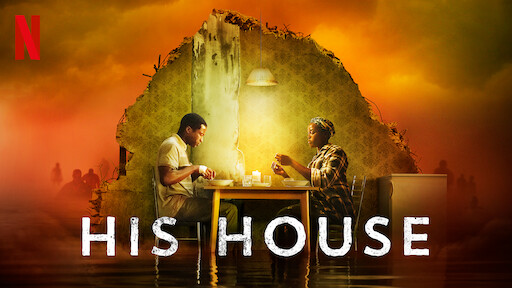

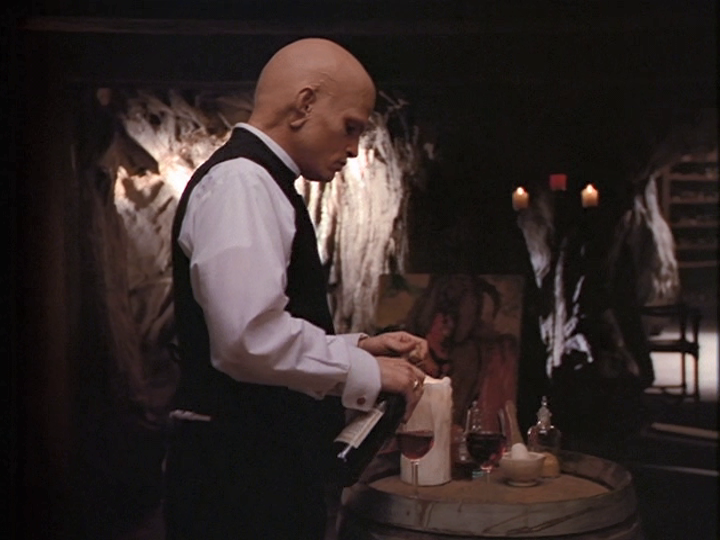
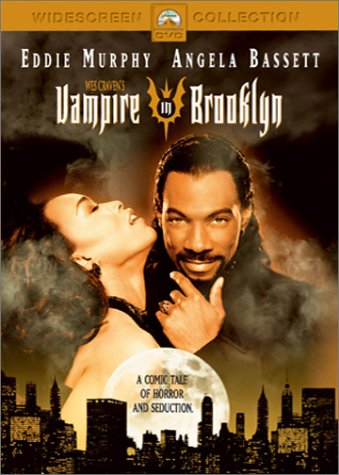
 to suck the life out of town. Vampire vows to wipe them out like vermin are all the more chilling because we recognize the gentrification and racist mentalities. What would the authorities care if vampires are pecking bad guys off the street in the Bronx? A wealthy white man writes a check so no one notices those made to disappear, and such a forgotten, downtrodden place is perfect for vampires who want to stay under cover. Friendships are tested when some want to do good for their community and others are right to be wary. Neighbors disbelieve the hear tell vamps dressed like Hamilton taking out the local thugs while humor alleviates suspenseful close calls – the vampire was just coming in to buy…sanitizer of course. Daytime nest explorations and homages to The Lost Boys accent the self aware genre winks while a bemusing montage establishes the lore herein complete with that cookie they hand out at church that doesn’t taste very good aka the “eucharist” and watching Blade. Single mothers try to keep their kids on the up, but the boys are trespassing for vampire proof and stealing holy water in a Sprite bottle. Skeleton keys, coffins, ringtones rousing the dead – what’s worse then being chased by vampires and caught in the backseat of the cop car? When their mothers come to get them but the vampire didn’t show up on your camera. Fun zooms for youthful actions and watchful eyes match creepy red lights, growls, and hypnotic kills as Haitian history preparations and shootouts don’t stop the undead. The kids take the crucifix off the wall and hope tia doesn’t notice, but the powdered garlic comes in handy and calling the Bronx a shithole is the last straw. Although a little short at under eighty-five minutes with credits, the swift solidarity doesn’t stray from its goal. Rather than underestimate the audience with stereotypical obnoxiousness, this refreshing contemporary take is great for young audiences as well as fans of wise and wise-cracking horror.
to suck the life out of town. Vampire vows to wipe them out like vermin are all the more chilling because we recognize the gentrification and racist mentalities. What would the authorities care if vampires are pecking bad guys off the street in the Bronx? A wealthy white man writes a check so no one notices those made to disappear, and such a forgotten, downtrodden place is perfect for vampires who want to stay under cover. Friendships are tested when some want to do good for their community and others are right to be wary. Neighbors disbelieve the hear tell vamps dressed like Hamilton taking out the local thugs while humor alleviates suspenseful close calls – the vampire was just coming in to buy…sanitizer of course. Daytime nest explorations and homages to The Lost Boys accent the self aware genre winks while a bemusing montage establishes the lore herein complete with that cookie they hand out at church that doesn’t taste very good aka the “eucharist” and watching Blade. Single mothers try to keep their kids on the up, but the boys are trespassing for vampire proof and stealing holy water in a Sprite bottle. Skeleton keys, coffins, ringtones rousing the dead – what’s worse then being chased by vampires and caught in the backseat of the cop car? When their mothers come to get them but the vampire didn’t show up on your camera. Fun zooms for youthful actions and watchful eyes match creepy red lights, growls, and hypnotic kills as Haitian history preparations and shootouts don’t stop the undead. The kids take the crucifix off the wall and hope tia doesn’t notice, but the powdered garlic comes in handy and calling the Bronx a shithole is the last straw. Although a little short at under eighty-five minutes with credits, the swift solidarity doesn’t stray from its goal. Rather than underestimate the audience with stereotypical obnoxiousness, this refreshing contemporary take is great for young audiences as well as fans of wise and wise-cracking horror.
 maturity – not horror’s typical angry lez be friends titillation solely for the viewer gaze. Unfortunately, creepy campers, chains, and a scarred abductor ruin necklaces and birthday plans, leading to skull entrance markers, an isolated cabin, and flashbacks of the original attack with hooded dead, white robes, and flowery dresses marred in blood. Sunrise deadlines, whispers of angels, fitting Gloria names, and religious subtext balance faith, doubts, God, biblical aversions, and horns. What’s a delusion and who’s delusional? Who’s right or wrong about what they believe? The multi-layered us versus them, who’s really involved in what sinister, and what is truth or lies aren’t clear amid threats, stabbings, whips, and history repeating itself. Men versus women innuendo and who needs saving attempts add to the less than forthcoming police, lack of answers, and obsessive searches. Who is trying to protect whom? Violence begets violence thanks to fanatical beliefs in the ritual and long-awaited ceremonies. This demon is deceptive, growing stronger and more tantalizing despite a gross, uncomfortable sex scene. Occasionally the boo monster in your face jumps are forced, but the fine body horror, creaking wings breaking out the back, squishing sounds, and black sinews make up the differences. Fevers, convulsions, hairy clumps, and visions increase along with the realizations of what is happening before candles, pentagrams, burns, and one more final sacrifice. Viewers know where it all has to go, yet this remains entertaining getting there via escalating horror invasive, ritual complications, and one ready and waiting demon.
maturity – not horror’s typical angry lez be friends titillation solely for the viewer gaze. Unfortunately, creepy campers, chains, and a scarred abductor ruin necklaces and birthday plans, leading to skull entrance markers, an isolated cabin, and flashbacks of the original attack with hooded dead, white robes, and flowery dresses marred in blood. Sunrise deadlines, whispers of angels, fitting Gloria names, and religious subtext balance faith, doubts, God, biblical aversions, and horns. What’s a delusion and who’s delusional? Who’s right or wrong about what they believe? The multi-layered us versus them, who’s really involved in what sinister, and what is truth or lies aren’t clear amid threats, stabbings, whips, and history repeating itself. Men versus women innuendo and who needs saving attempts add to the less than forthcoming police, lack of answers, and obsessive searches. Who is trying to protect whom? Violence begets violence thanks to fanatical beliefs in the ritual and long-awaited ceremonies. This demon is deceptive, growing stronger and more tantalizing despite a gross, uncomfortable sex scene. Occasionally the boo monster in your face jumps are forced, but the fine body horror, creaking wings breaking out the back, squishing sounds, and black sinews make up the differences. Fevers, convulsions, hairy clumps, and visions increase along with the realizations of what is happening before candles, pentagrams, burns, and one more final sacrifice. Viewers know where it all has to go, yet this remains entertaining getting there via escalating horror invasive, ritual complications, and one ready and waiting demon.